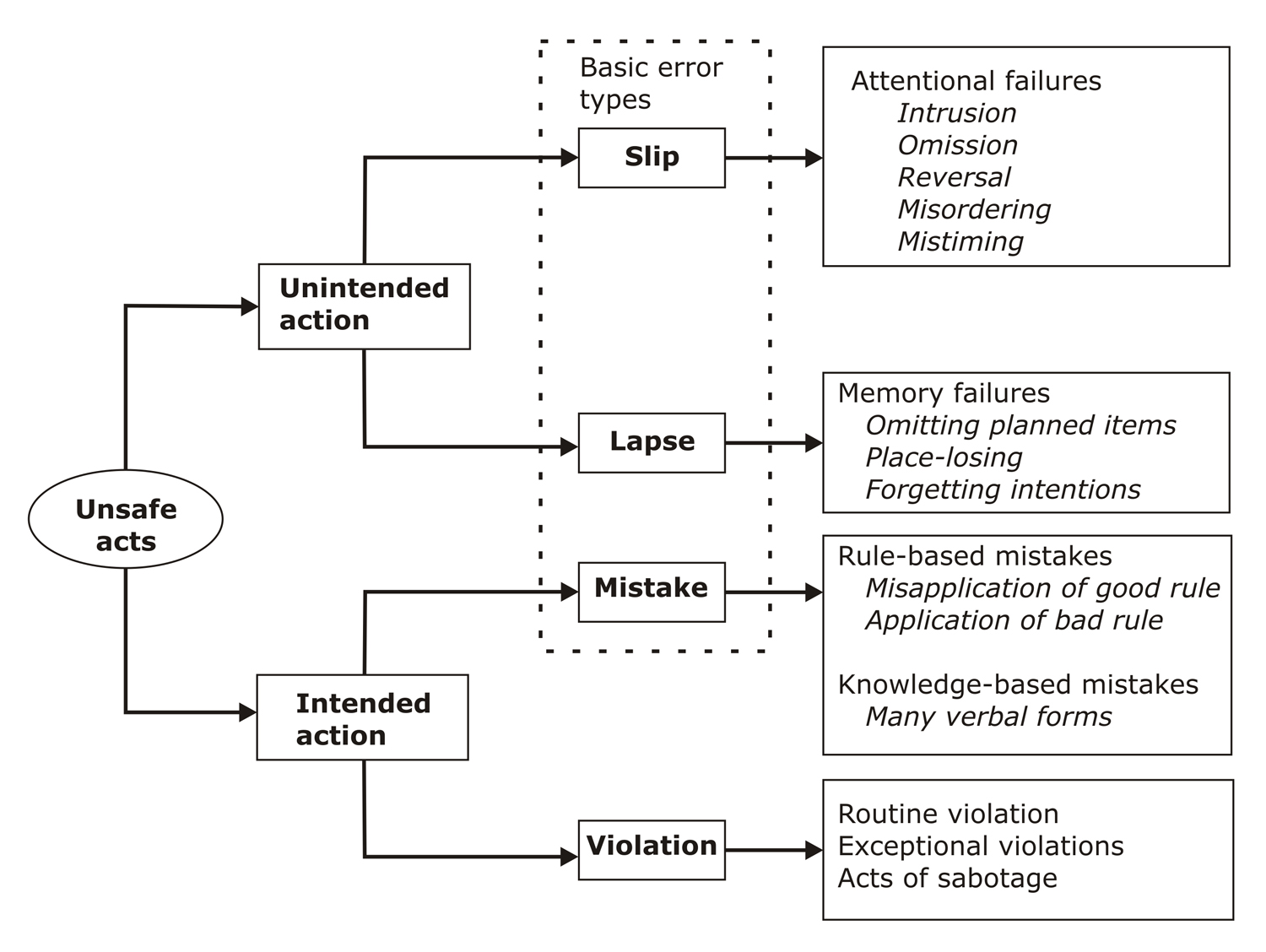From the long back human errors and reliability were focused in human factors and ergonomics research to overcome human limitations by improving efficient man-machine system design. This part of this course will introduce about causes of human errors. Understanding of human errors is very crucial to the design of human-oriented products. From the traditional engineering point of view, human error is a human action/human behavior that violets system tolerance. Current approaches have defined human error as human system mismatch. Nemeth (2004) have described about three different causes of human error. According to him error can be attributed due to task complexity, error-likely situations and behavioral characteristics.
Task complexity- “Complex task sequences can overburden short-term memory limited capacity and long-term memory recall”
Error-likely situations- “Situations that are poor match for human abilities, limits, experience or expectations are likely to induce errors.”
Behavioral Characteristics- “Demographic traits, skills, training, experience, emotional state and stress factors are few of the characteristics that can induce error.”
Human errors have been classified by several authors in different ways. Swain and Guttmann (1980) described five kinds of error depending on behaviors of omission and commission (Table 5).
Table 5. Five types of human error, three of which can be considered to fall within errors of commission (Adapted from Swain and Guttmann, 1980)
|
Omission |
Portion of a task is skipped |
|
Commission |
Task is performed incorrectly |
|
Extraneous act |
Task that should not have been performed, as it diverts attention from the system |
|
Sequential act |
Task is performed out of sequence |
|
Time error |
Task performed too early, too late, or outside of time allowed |
According to James Reason (1990), error is ‘a generic term to encompass all those occasions in which a planned sequence of mental or physical activities fails to achieve its intended outcome, when these failures cannot be attributed to the intervention of some chance agency’. Reason correlates types of human errors with three types of human behavior which are predominated characteristics in Rasmussen’s skills-rules-knowledge model (see Table 6).
Table 6. types of human errors based on Rasmussen’s skills-rules-knowledge model (Adapted from Reason, 1990)
|
Level |
Error type |
Cognitive stage |
Failure modes |
|
Knowledge |
Mistakes |
Planning |
Failure of expertise, lack of expertise |
|
Rules |
Lapses |
Storage |
Failure of good rule application or knowledge |
|
Skill |
Slips |
Execution |
Failure of skill by inattention or over attention |
Donald Norman (1988) described about two kinds of human errors that are slips and mistakes. According to Norman, slips are errors that are caused by lack of attention; whereas, mistakes are errors due to conscious deliberation. Descriptions about these errors are summarized in Table 7.
Table 7. Norman (1988) divides human error into two slips and mistakes
|
Slips (automatic behavior) |
|
Capture errors- Frequently done activity supplants another |
|
Description errors- Performing correct action on wrong object triggering incorrect action |
|
Associative activation errors- Internal thought/ association triggers incorrect action |
|
Loss of activation errors- Forgetting to do something |
|
Mode errors- Changed meaning in the same context leads to incorrect action |
|
Mistakes (conscious deliberation) |
Reason (1991) describes that unsafe acts may lead to different actions and these actions may intern lead to an error. Reason’s model of psychological varieties of human error is very important for understanding how unsafe act may lead to an error. This model is presented in Figure 6.

Figure 6. Psychological varieties of unsafe acts (Adapted from Reason, 1991)

